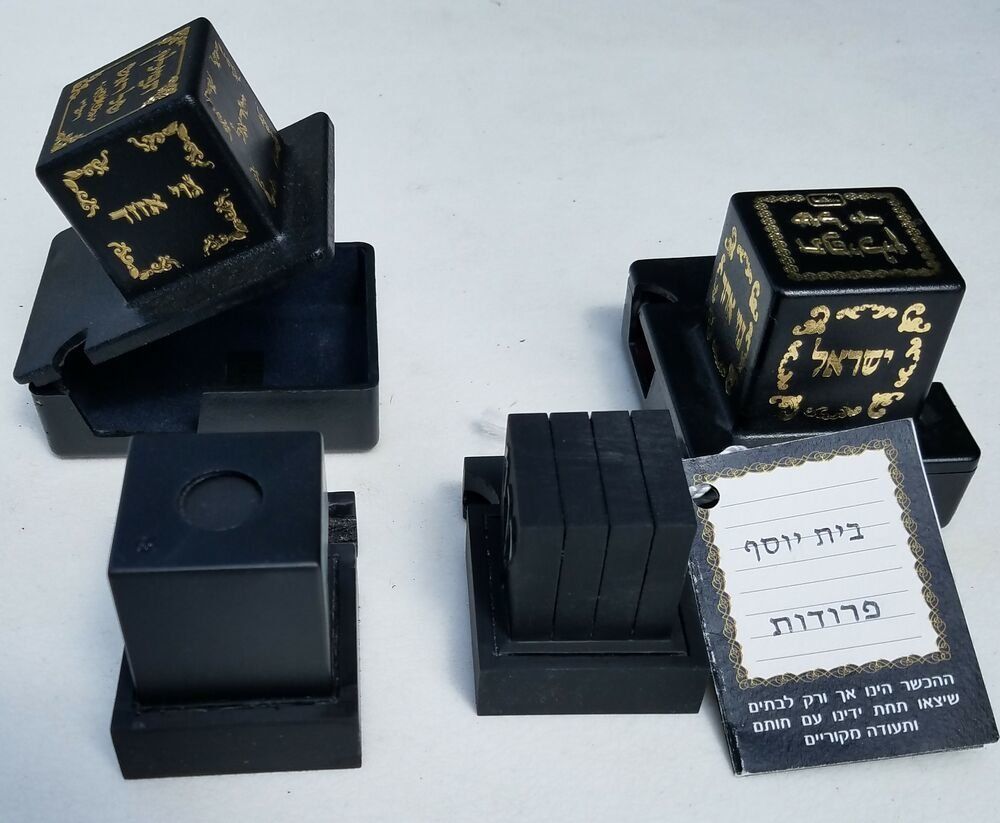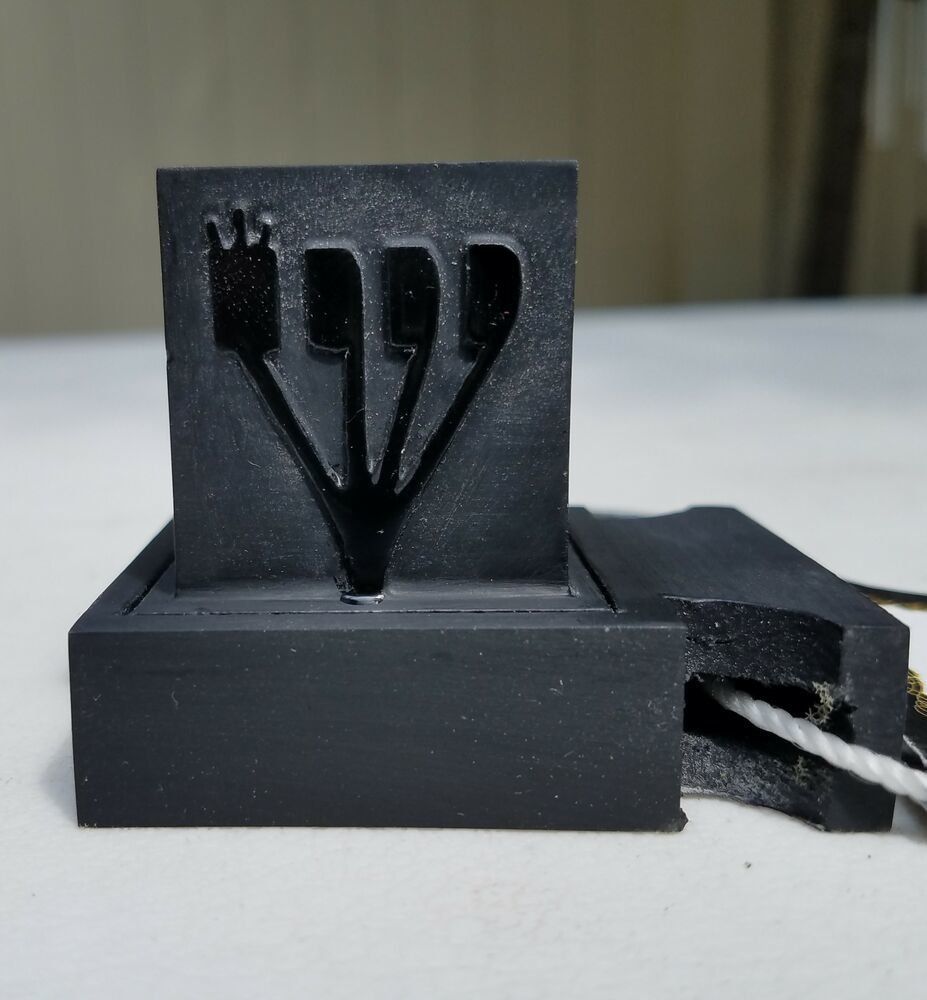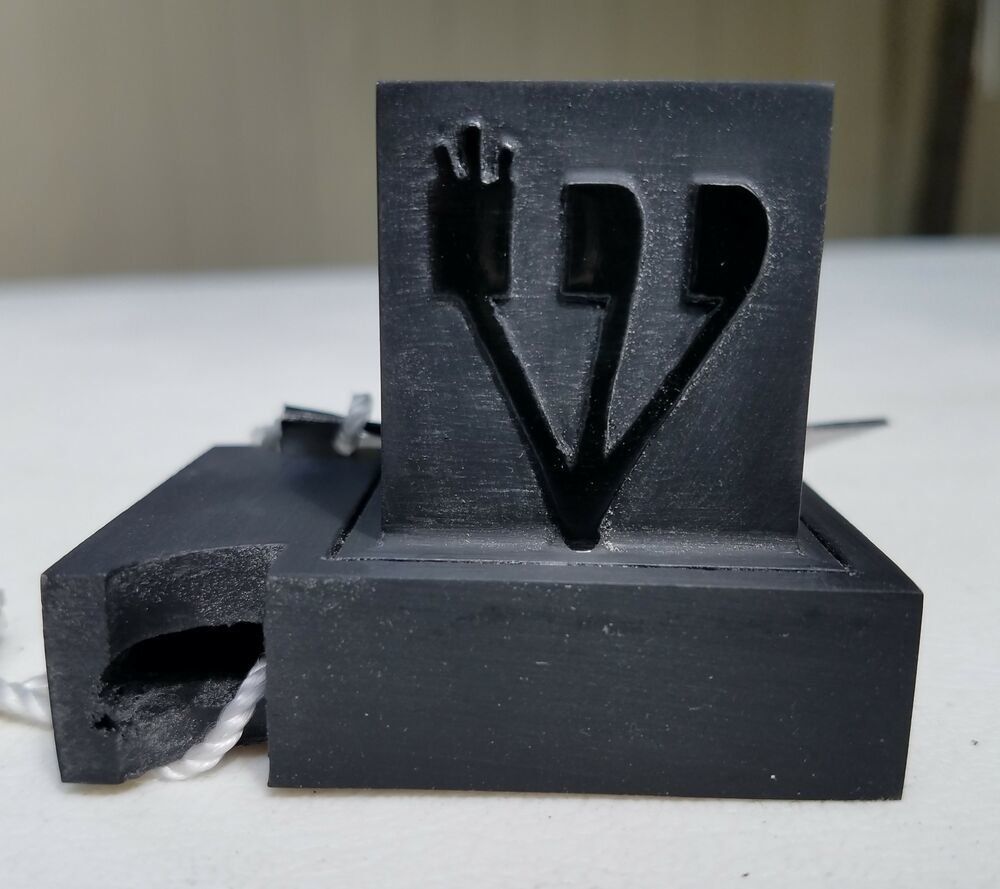TEFILLIN
Tefillin
What are they?
Tefillin are 2 small black boxes made from the hide of a kosher animal, usually a bull or a cow. One box with four separate compartments is worn on the head. The second is worn on the weaker arm, so if you are right handed it would be worn on the left arm and if you left handed it would be worn on the right arm. Each box contains four scrolls written on parchment, again from a kosher animal. The four scriptures contained are the specific scriptures that mention tefillin in the torah. They are:
- (Exodus 13, 1 – 10) Sanctify unto me every first born….
- (Exodus 13, 11 - 16) When G-d brings you to the land of….
- (Deuteronomy 6, 4 - 9) Hear O Israel YHVH our G-d….
- (Deuteronomy 11, 13 – 21) And if you will listen to my commandments…
The parchments inside the tefillin have very specific requirements concerning the writing itself as well as the state of mind the sofer must have when writing.
It takes anywhere from 20 to 40 hours to write a pair of tefillin. One the tefillin are written they are scanned and checked for textual correctness. Tefillin like a mezuza must be written in order, so if the scan reveals that a letter is missing potentially the sofer could lose a week’s worth of work.
Tefillin must:
- Be written on parchment made from the hide of a kosher animal
- Be written in black ink
- Be written by hand
- Have every letter follow the specific guidelines that define that letter
- Have all the letters written in order
- Have every letter formed by creating the letter, not by erasing part of an existing letter
- Be written with the specific intention of writing tefillin
- Be sanctified orally every time G-d’s name is written
These last two items are of the utmost importance. Like other items that are written if the sofer was not mentally engaged or he missed sanctifying G-d’s name even once, then all you have is a beautiful piece of calligraphy. On a celestial, cosmic, and sanctity level this piece of art cannot be used to fulfill the commandment. One cannot stress how important kavanah (intent) is in the creation of sanctity of an object such as tefillin, mezuzah or a sefer torah. At all levels, whether it is writing the parshiot, making the klaf, making the boxes (batim) or even tying the straps for the tefillin, the sofer has to actively engage his mind for the purpose of creating an object of sanctity.
Our parshiot (the section of the torah that are enclosed in the arm and head tefillin) are written by certified scribes. They always undergo two separate reviews:
A computer scan
the mezuzah is scanned in to a software program which compares the text written to the correct text. If the program finds that there is an extra letter or word, the parsha is potentially fixable however is it is missing even a single letter it is passul and cannot be fixed, because the letters must be written in order.
A review by a certified sofer
a sofer who did not write the parsha reviews it letter by letter, to ensure that each letter has the required characteristics of that letter, as well as to check if there are any letters which are not fully connected, or any two letters which are touching. (All subject to strict laws concerning which letters can be fixed and which may not be fixed.)
Styles of writing for the parshiot:
- Beit Yosef
- Arizal
- Sefard/Velish
Batim
The batim, literally the houses in which the scrolls are put fall into two different types of construction. The cheaper are called p’shutot – simple ones. They are made of a combination of layers of klaf (parchment) that has been pressed together. The boxes are light, they are also not repairable if they should fall. As the boxes age there is no way to sand them down and make them look new.
Gassot are boxes made from one piece of hide. It takes approximately 7 – 9 monthes to make a pair of gassot batim. With few exceptions they will last a lifetime. The boxes can be refinished and repaired under most circumstances. They are considered mehudar and have different levels and prices associated with those levels. We generally focus on the basic level of avodat mechona, machine made and avodat regel, a level higher that enables the person making the tefillin to control the machine with a foot pedal.
Our gassot are prudot (separated from the top to the base, which is considered more mehudar than glued.) As with the parshiot we sell batim that are consistent with the style of writing inside.
When a person buys tefillin in a store neither clerk nor buyer knows that he has received a quality pair of tefillin, or minimally knows what is the quality of the parshiot inside. As with other soferim we may have a pre-assembled pair for the person who is used to buying off the shelf. However the majority of what we have is put together based on your choice of parshiot and batim. The lag time could be a week or more assuming we have suitable parshiot available. Or if you prefer we can write them for you, which would entail an 8 week lead time or more based on the time of year.
At NJ Sofer, all mezuzot which we sell have been computer scanned. The ones that we purchase from other sofrim are all reviewed in house. The ones that we write are reviewed by an independent certified sofer. We never sell tefillin which has not had both reviews.



